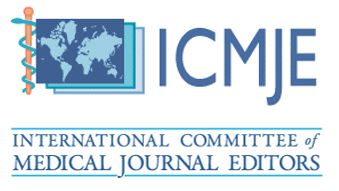Bone Regeneration Using Polypropylene Membrane in Peri-implant Bone Loss: Case Report with 4 Years of Follow-up
Kevin Dilan Bacaro1, Munir Salomão2, Danilo Lourenço3, Luiz Carlos Magno Filho4, Marcelo do Lago Pimentel Maia5, and Irineu Gregnanin Pedron6*
1Undergraduate Student, Universidade Brasil, São Paulo, Brazil
2Independent Researcher, São Paulo, Brazil
3Professor, Department of Orthodontics, Universidade Brasil, São Paulo, Brazil
4Professor and Head, Department of Oral and Maxillofacial Surgery, FUNORTE, Mogi das Cruzes, Brazil
5Professor, Department of Oral Implantology, Marcelo Yoshimoto Institute, São Paulo, Brazil
6Professor, Department of Periodontology, Implantology, Stomatology, Integrated Clinic, Laser and Therapeutics, Universidade Brasil, São Paulo, Brazil
*Corresponding Author: Irineu Gregnanin Pedron, Department of Periodontology, Implantology, Stomatology, Integrated Clinic, Laser and Therapeutics, Universidade Brasil, São Paulo, Brazil
Received: May 27, 2022 Published: June 09, 2022
Abstract
The polypropylene membrane has been widely used in regenerative and reconstructive procedures, particularly in Implant Dentistry. It is a biocompatible, non-resorbable and impermeable film. It does not present porosity on its surface, conferring total impermeability, hindering the accumulation of debris, food remains and microorganisms on its surface. It was designed to remain intentionally exposed to the oral environment. Originally, it was idealized to be used after exodontia, for the maintenance, permanence and stabilization of the clot inside the alveolus and to avoid the invagination of the epithelial tissue, reducing the possibility of bone loss by remodeling and resorption of bone tissue. The maintenance of the blood clot inside the surgical site is fundamental to promote angiogenesis and chemotaxis of the cells competent for bone formation. Afterwards, the platelets present there are responsible for the production of new bone tissue, favoring the repair of the surgical site, by means of bone morphogenetic proteins (BMPs). Besides the post-exodontic indication, the membrane has been used in other indications, including bone defects caused by bone fenestrations, osteolytic lesions, bucosinusal communications, apicectomies and periapical curettage, and in cases of immediate implants. The purpose of this article is to present the case of a patient who developed peri-implant disease in two implants in the left mandibular premolar region, with bone loss around the screw threads. Peri-implant treatment of decontamination was performed, followed by installation of the polypropylene membrane adjacent to the peri-implant defect. By radiographic control, 6 months after the surgical procedure, bone regeneration adjacent to the screw threads was observed. The case has been followed for 4 years.
Keywords: Bone Regeneration; Oral Surgery; Bioengineering; Implant Dentistry.
Citation: Bacaro KD, Salomao M, Lourenço D, Filho LCM, do Lago Pimentel Maia M, Pedron IG. “Bone Regeneration Using Polypropylene Membrane in Peri-implant Bone Loss: Case Report with 4 Years of Follow-up”. SVOA Dentistry 2022, 3:3, 162-167.











